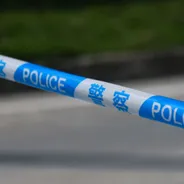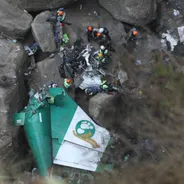In November 2018, John Chau's voyage to North Sentinel Island ended in tragedy when he was shot dead by the Sentinelese, an indigenous group who refuse contact with the outside world.
But a new account from an anthropologist has shed light on the completely different experience she had with the uncontacted tribe.
Dr. Madhumala Chattopadhyay, one of the first people to establish a friendly relationship with the tribe, recently opened up about her first visit to the island, describing the tense but ultimately peaceful meeting.

As reported by Probashi Online, the former anthropologist sailed to the Andaman Island in 1991 with a group of other people, including Director of Tribal Welfare in the A&NI administration, Shri S. Awaradi, and team leader and medical officer, Dr Arun Mullick.
The purpose of their journey was to attempt to make friendly contact with the Sentinelese; however, they weren't expecting success due to the failures of previous attempts by different groups.
Describing the moment the craft approached the island, Chattopadhyay claimed her "heartbeat went up a notch."
The island initially looked deserted, but the team eventually spotted the indigenous tribe standing behind the trees. Mostly men, four of them were armed with bows and arrows.

Chattopadhyay, then just 27, and the group decided it was time to take initiative and started to drop coconuts in the water to see if the Sentinelese would accept their offering.
"After a bit of trepidation a few Sentinelese men came sprinting and waded on the shallow continental shelf to collect the floating coconuts. The team was awestruck; the Sentinelese had accepted a friendly gesture," writes Probashi Online.
Four hours passed with the contact party floating coconuts and the tribe collecting them, neither group making the first move to bridge the gap.
Chattopadhyay described how her group left momentarily replenish their stock and returned to cries of "Nariyali Jaba Jaba" - "more and more coconuts".
Soon after, a young Sentinelese boy waded up to the boat and touched it with his hands and men from the tribe followed to collect the coconuts.
But this historic moment of peaceful contact was destroyed when another Sentinelese youth aimed his arrow at the contact party.

A stand-off ensued, in which Chattopadhyay claims she refused to break eye contact and the boy refused to put his arrow down.
The arrow was fired, but in a move that likely saved the anthropologist's life, a Sentinelese woman standing nearby shoved the marksman and the arrow missed its mark, falling in the water.
Undeterred by the violent move, Chattopadhyay jumped into the water and found herself "looking eye to eye with one of the most primitive people on earth".
"It was not a meeting with the finger on the trigger or with a bow string pulled, it was a meeting between equals, with dignity and respect," Probashi Online wrote. "The coconuts were not being floated in water anymore, but were being handed over in person. This was making of anthropological history."
Following the successful visit, a larger team returned a month later and received a friendly reception from the tribe.

Speaking to National Geographic about her research, Chattopadhyay said: "Never ever in my six years of doing research alone with the tribes of Andamans did any man ever misbehave with me. The tribes might be primitive in their technological achievements but socially they are far ahead of us."
A series of contact expeditions continued until 1994, but the programs were eventually abandoned with the Indian government fearing that outside contact might introduce disease in the tribe.
Since then, the Indian government has maintained a policy of no deliberate contact, intervening only in cases of natural calamities that might pose an existential threat.
In 2004 and 2005, expeditions took place to evaluate the effects of the 2004 Indian Ocean tsunami. And in 2014, an aerial expedition followed by a circumnavigation investigated the effects of a forest fire.
Chattopadhyay maintains that the government has made the right decision, stating the Sentinelese must not be interfered with.
"The tribes have been living on the islands for centuries without any problem. Their troubles started after they came into contact with outsiders," she said. "The tribes of the islands do not need outsiders to protect them, what they need is to be left alone."












